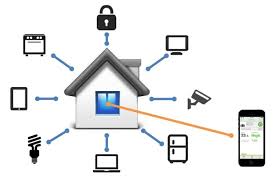Published on the 18/09/2014 | Written by Newsdesk

In less than a decade the typical family home in Australia and New Zealand could contain several hundred internet connected devices as the cost of making a device internet-smart drops to around $1…
The home is the latest frontier for the internet of things (IoT), with new research from Gartner suggesting that inexpensive smart devices and a raft of new services will drive demand domestically.
Interest in the IoT has been growing rapidly as both industry and governments recognise the benefits of having greater access to real-time, highly granular data, and the ability to control remotely smart networks of devices using the insight from that data. For a comprehensive analysis of the emerging IoT market read our features ‘The internet of things: precipice of a revolution’ on the trends driving the IoT and a practical look at ‘How to plug into the internet of things’ as a manufacturer and retailer.
Savvy businesses are now also grappling with the consumer potential of smart devices, whether in the form of domestic appliances or wearables, and telcos such as Telstra are offering wireless machine-to-machine (M2M) connectivity for as little as $3 a month.
Gartner suggests a raft of different domestically focused services will emerge such as automatic replenishment of consumables including coffee capsules or water filters; integration of home sensors with cloud-based home monitoring and security to replace traditional burglar alarms. Governments and utilities may also use sensors to influence citizen behavior – for example reducing tariffs for water used for washing compared to the cost of water used to drench lawns. The research firm also forecasts that the data collected by sensor enabled products will be collected, analysed and monetized by a slew of companies operating in the IoT space.
Rival analyst, Ovum, predicts that Asia and Oceania will lead the charge generally for M2M connections. Globally it is forecasting a 162 percent increase in M2M connections over the next five years to 530 million – which seems quite low given Gartner’s forecast that even the average home might have hundreds of smart devices.
The reason for this apparent disparity – and the hyperbole that tends to surround any discussion of IoT – is that at present IoT sits at the very top of the peak of inflated expectations on Gartner’s 2014 hype cycle for emerging technologies. There are still challenging issues to be resolved regarding technical standards and consumer attitudes to having their every move monitored.
Besides creating new services, companies which want to play in this sector of the market will likely need compelling demonstrations of customer value.



























